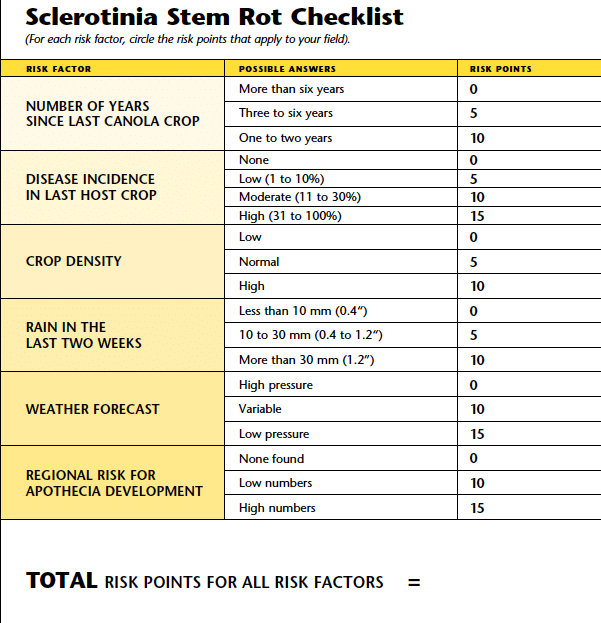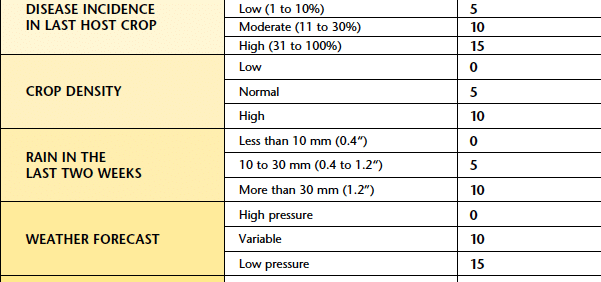Even if it doesn’t rain during flowering, high humidity can promote apothecia to release sclerotinia ascospores. Consider that when using the checklist below to calculate your sclerotinia stem rot risk. Don’t forget that the risk of sclerotinia infection doesn’t only come from your fields but also your neighbors’ fields. Check fields that were in canola last year for apothecia development. Click here and scroll down for photos of apothecia.

Assessing your score. This checklist developed in Sweden can be useful in helping to assess disease risk in fields. Growers should fill out the checklist for each field shortly after first flower (when 75% of the canola plants have at least 3 open flowers). The greater the risk score for a field the higher the probability of a positive economic return. Results in Sweden have suggested that fields scoring 40 or higher will likely benefit from a fungicide, but this may vary a bit depending on fungicide cost and commodity price. Using this checklist effectively requires scouting for apothecia, usually in nearby cereal crops following canola or other host crops (e.g. beans, sunflowers) in the rotation. The same moist soil conditions conducive to apothecia production can also favor the development of many other types of mushrooms or fruiting bodies.
